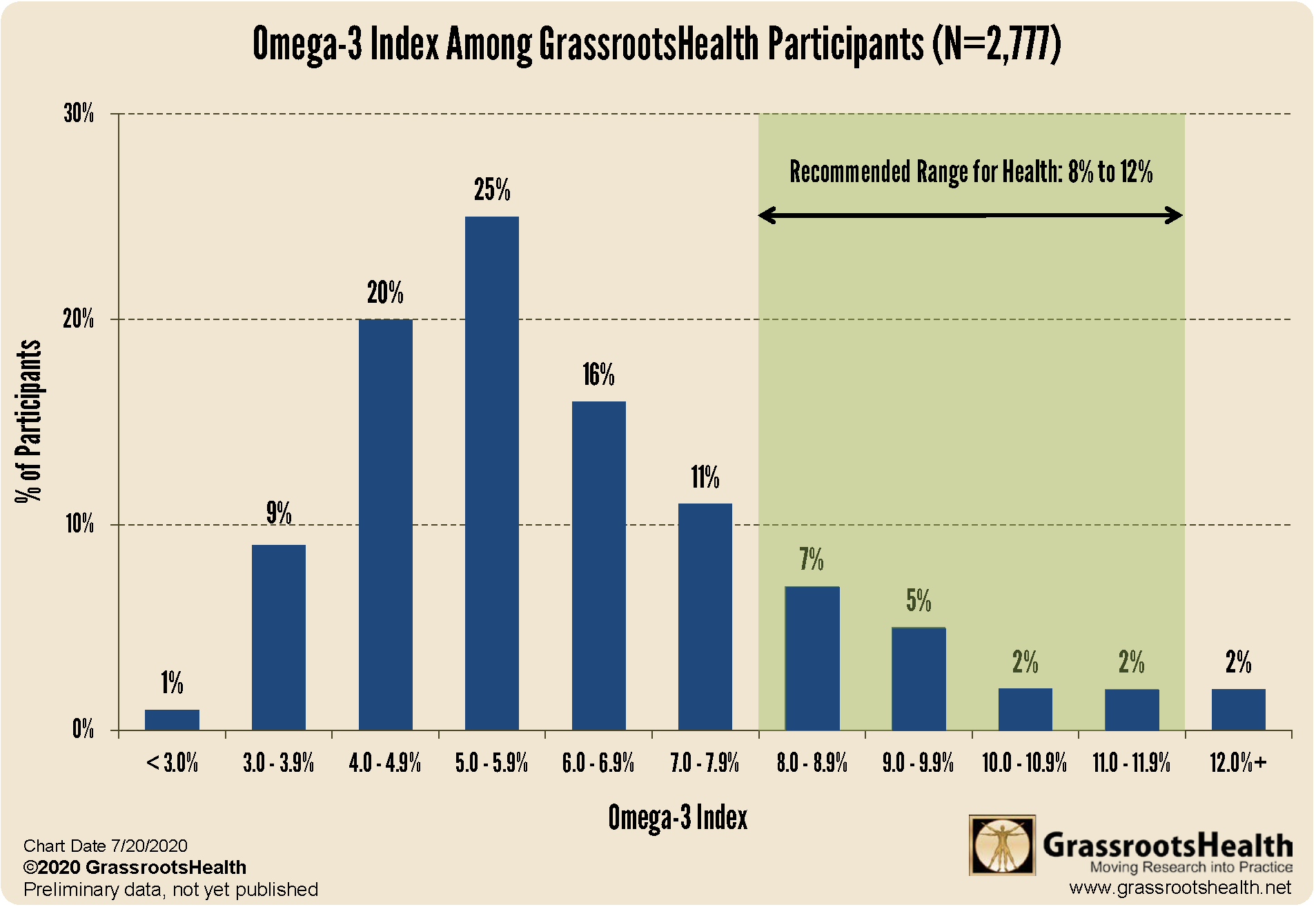Published on July 23, 2020

Omega-3s are a healthy type of fat that comes in multiple forms. Omega-3s can be found in fish (EPA and DHA) and in plant oils such as flaxseed and soybean (ALA). The omega-3s found in fish (EPA and DHA) have been linked to the most health benefits. These benefits include a lower risk of cardiovascular disease, dementia, depression, asthma, inflammation, and cancer. These omega-3s can also help treat symptoms of lupus, arthritis, and dry eye disease. While ALA from plant oils can be converted to EPA and DHA, this happens at a very low level.
Since mid-2017, GrassrootsHealth has offered a home blood spot test for the Omega-3 Index, a measurement of the amount of EPA and DHA in red blood cell (RBC) membranes. This measurement reflects long-term (about four months) intake of EPA and DHA from food and supplements. Evidence suggests that achieving an Omega-3 Index of at least 8% is optimal for health whereas an index of less than 4% is deficient, particularly as it relates to cardiovascular disease.

What are the Omega-3 Index levels among GrassrootsHealth Participants?
Among the 2,777 participants who tested their Omega-3 Index, the average index was 5.7%. Almost one-fifth (18%) of participants have an Omega-3 Index of 8% or higher; 27% have an index between 6.0% and 7.9%, 45% have an index between 4.0% and 5.9%, and 10% have an index less than 4%.
Additionally, among those who completed two or more tests, 71% of those with an Omega-3 Index less than 8% increased their index after their first test. This indicates that when individuals are provided with information about their health, they are empowered to make changes and to take charge of their own health.
Have you measured your Omega-3 Index?
After you receive your Omega-3 Index results, we encourage you to use the Omega-3 Calculator to determine an estimated amount of how much more EPA+DHA you will need to reach 8% (or other desired goal). EPA+DHA is found in fish and many omega-3 supplements, but be sure you check how much EPA+DHA is in the specific types of fish you eat and the omega-3 supplements you take.
Do you know what your Omega-3 Index is? Check yours today!
Are You Getting Enough Vitamin D?
Do you know what your vitamin D level is? Be sure to test today to find out, and take steps to keep it within a target of 40-60 ng/ml or 100-150 nmol/L! Give your immune system the nutrients it needs to support a healthy you and protect yourself from unnecessary diseases.
Through GrassrootsHealth Nutrient Research Institute, you can also test your essential elements magnesium, copper, zinc and selenium, toxins such as lead, mercury and cadmium, as well as your omega-3 levels, inflammation levels and thyroid stimulating hormone (TSH) level. Find out your levels today! Log on to the test selection page (click the link below) to get your tests and see for yourself if your levels can be improved.
Make sure you track your results before and after, about every 6 months!
How can I track my nutrient intake and levels over time?
To help you track your supplement use and nutrient levels, GrassrootsHealth has created the Personal Health Nutrient Decision System called
For each specific supplement, you can track what days you take it, how much, and many other details. This will help you know your true supplemental intake and what patterns of use work for you to reach and maintain optimum nutrient levels. Check it out today!








